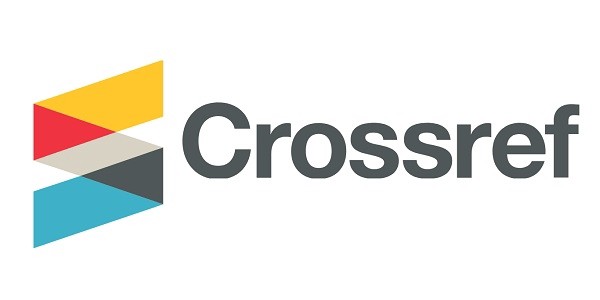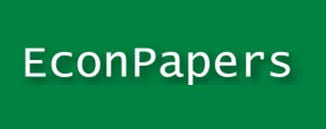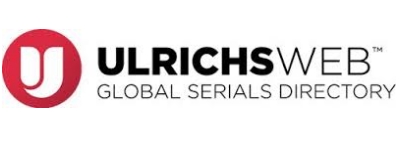Human Capital Accounting and Financial Performance of Manufacturing Firms in Nigeria
DOI:
https://doi.org/10.31384/jisrmsse/2024.30.6.3Abstract
Any organization's success depends on the capacity of human capital to maximize other resources such as property, equipment and money effectively and efficiently, because human resources are the greatest assets at the disposal of companies. This research is more of descriptive in nature and the application of mathematical modelling techniques. Research was undertaken from the Security and Exchange Commission platform on listed manufacturing firms spanning from 2010-2019. The scope was to have a reliable data for the research. The data was analyzed by regression using Microsoft Excel 2016. The study found that the variable of recruitment cost has a negative significant relationship with return on asset with Coef. = -2E-06, t-value = -0.67617 and P-value = 0.517996; the variable of employee acquisition cost has a negative significant relationship with return on asset with the Coef. = -4E.06, t-value = -4.55662 and P-value = 0.001858 while the variable of employee staff cost has a negative significant relationship with return on asset with the Coef. = . -9.5E-07, t-value = -5.27705 and P-value = 0.0000749. This implies that an increase in recruitment and employee acquisition and employee staff cost will cause a decrease in return on asset. Going by the result of this study, we conclude that there is no significant relationship between human capital accounting and financial performance of listed manufacturing firms in Nigeria. Hence, this explains why manufacturing firms has a strong human capital but a very weak financial performance while recommending that Manufacturing firms should imbibe the culture of capitalizing and reporting all expenditures/investments on human capital that improve the quality and productivity.
Downloads
References
Abubakar, S. (2008). Human resource accounting: an assessment of the valuation models and methods. Nigerian Journal of Accounting Research, Vol. 4(2), 80-102.
Adebawojo, O.A. (2015). Human asset accounting and corporate performance. American International Journal of Contemporary Research, 5(1), 145-158.
Ahangar, R. G (2011). The relationship between intellectual capital and financial performance: An empirical investigation in an Iranian company. African journal of business management, 5(1), 25-40
Amahalu, N.N, Abiahu, M.C., Obi, J.C. Okika, E.C (2016) Effects of Human Resources Accounting on Financial Performance of Quoted Deposit Money Banks in Nigeria. https://www.researchgate.net/publication/320245434 DOI: https://doi.org/10.2139/ssrn.3704461
American Accounting Association (1973). Report of the committee on accounting for human resources. The Accounting Review, 4(8), 6-11
Archambault, J. J., & Archambault, M. E. (2003). A multinational test of determinants of corporate disclosure. The International Journal of Accounting, 38, 173-194. DOI: https://doi.org/10.1016/S0020-7063(03)00021-9
Asare E. Sampson S. Onumah J.M. (2013). Exploring the Disclosure of Intellectual Capital in Ghana. Evidence from Listed Companies.. DOI: https://doi.org/10.4172/2168-9601.1000107
Barth, M., Landsman, W., Lang, M. & Williams, C. (2006). Accounting Quality: International Accounting Standards and US GAAP. Working paper series. . DOI: https://doi.org/10.2139/ssrn.688041
Bagudo, M. M. (2010). Human Resources Accounting: A Model for Valuation and Reporting in the Nigerian Banking Sector. Unpublished M. Sc. Thesis, Department of accounting, Ahmadu Bello University, Zaria.
Bello, A. (2005). Markets of Financial Reporting: An Efficiency Test on Nigerian Banks. A Ph.D seminar paper presentation at the department of accounting, Ahmadu bello University, Zaria.
Beuselinck, C. & Manigart, S. (2007). Financial Reporting Quality in Private Equity Backed Companies: The Impact of Ownership Concentration. Small Business Economics, 19, 201-214. DOI: https://doi.org/10.1007/s11187-006-9022-1
Carper, W. B. (2002), The Early Development of Human Resource Accounting and the Impact of Evolving Asset Valuation Theory. Egypt: University Cairo.
Dandago, K. I. (2003). Must Historical Accounting Continue to Dictate Financial Reporting Practice in Nigeria? Issues and Readings. Nigerian Accounting Association Publication.
Encycloopedia (2021) https://www.encyclopedia.com/terms/r/returnonassets.asp
Enofe, A.O., Mgbame, C. & Ovie, S.O. (2013). Human resources accounting disclosures in Nigeria quoted firms. Research Journal of Finance and Accounting, 4(8), 13-23
Flamholtz, E. G. (1971). A model for human resource valuation: A stochastic process with service rewards. The Accounting Review, 46, April.
Flamholtz, E. G. (1974). Human Resources Accounting. California, USA: Dickenson Publishing Company.
Flamholtz, E. G. (1985). Human Resource Accounting, 3rd Ed. San Francisco CA, USA: Jossey-Bass.
Flamholtz, E. G. (1999). Human Resource Accounting: Advances in Concepts (3rd Ed). San Francisco, USA: Jossey-Bass. DOI: https://doi.org/10.1007/978-1-4615-6399-0
Friedman, A. & Lev, B. (1974). A surrogate measure of the firm’s investment in human resources. Journal of Accounting Research, 1(2), 235-250. DOI: https://doi.org/10.2307/2490374
Gates, S. (2002). Value at Work: The Risks and Opportunities of Human Measurement and Reporting. USA: The Conference Board.
George, H. D. (2005). Measuring the Dollar Value of Your Human Assets. California, USA: EBSCO Publishing.
Gon, S. (2005). Value at work: The risk and opportunities of human measurement and reporting. USA: The conference board.
Gupta, D. K. (1991). Human resource accounting in India: A perspective. Administrative Staff College of India Journal of Management, 20(1), 9-10.
Hansson, B. (2004). Accounting for Human Capital Investments. Working Paper IPF. Sweden: Uppsala University.
Jasrotia, P. (2004), The need for human resource accounting, http://www.itpeopleindia.com/20021216/cover.shtml
Kieso, D. E., Weygandt, J. J., & Warfield, B. (2004). Intermediate accounting (11 ed.). London: John Wiley & Sons, Inc.
Kodwani, A. D. & Tiwari, R. (2007). Human Resource Accounting - A New Dimension. A Paper Presented at the Canadian Accounting Association (CAAA) Annual Conference, January. DOI: https://doi.org/10.2139/ssrn.961570
Kurawa J.M & Kabara A.S. (2014). Impact of corporate governance on voluntary disclosure by firms in the downstream sector of the Nigerian petroleum industry. Int’l Proceedings of World Business Research Conference (1-19).
Lau, A. H. & Lau, H. S. (1978). Some Proposed Approaches for Writing off Capitalised Human Resource Assets. Journal of Accounting Research, 1(6), 80-102. DOI: https://doi.org/10.2307/2490412
Lev, B. (2001). Intangibles: Management, Measurement, and Reporting. Washington, D.C: Brookings Institution Press.
Lev, B. & Schwartz, A. (1974). The use of economic concept of human capital in financial statements. The Accounting Review, 7(1), 103-112.
Melville, A. (2009). International Financial Reporting. London: Pearson Education.
Mohiuddin, M.; Naiibullah, S. and Shahid. A.I. (2006). An exploratory study on intellectual capital performance of the commercial banks in Bangladesh. The Cost and management, 34(6), 40-54.
Nadler, L. Ed. (1984). The Handbook of Human Resources Development.John Wiley and Sons.
Nigerian Stock Exchange (2015). Fact Book. Abuja: The Nigerian Stock Exchange.
Nigerian Stock Exchange (2016). Fact Book. Abuja: The Nigerian Stock Exchange.
Nigerian Stock Exchange (2017). Fact Book. Abuja: The Nigerian Stock Exchange.
Nigerian Stock Exchange (2018). Fact Book. Abuja: The Nigerian Stock Exchange.
Nigerian Stock Exchange (2019). Fact Book. Abuja: The Nigerian Stock Exchange.
Nzekwu, C. (2009). Financial reporting. SEC Quarterly Journal, 2(1), 6-10.
Obara L.C (2013) Conventional human asset accounting treatment and corporate profitability evaluation. European Journal of Accounting Auditing and Finance Research.66-82.
Obe, A. (2000). Management of Human Resources: Achievements made by Nigeria. A paper presented at workshop on management of human resources in Africa challenges for the third millennium, Tangier, Morocco
Parton, R. (1962). http//www.pasiandpartners.com/humanassetaccounting.htm
Robbins, S. P. (2013), Organisational Behaviour (9th Edition). Singapore: Pearson Education (Singapore) Ltd.
Roslender, R. (2004). Accounting for intellectual capital: rethinking its theoretical underpinnings. Measuring Business Excellence, 8(1), 38-45. DOI: https://doi.org/10.1108/13683040410524720
Salawu, R. O. (2009). Financial Reporting on the Internet by Quoted Companies in Nigeria. A paper presented at a conference on repositioning African business and development for the 21st Century, Ife, Osun State.
Salman R.T & Dandago K.I. (2013) Intellectual capital disclosure in financial reports of Nigerian companies. In financial reports of Nigeria companies 1-17
Sekaran U. Bougie R. (2016). Research Methods for Business. A Skill Building Approach. John Wiley and Sons, Haddington.
Shaw, K.W. (2003). Corporate Disclosure quality, earnings smoothing, and earnings timeliness. Journal of Business Research, 56(12), 1043-1050 DOI: https://doi.org/10.1016/S0148-2963(01)00328-9
Syed, A.M. (2009). Human resource accounting disclosure of Bangladesh companies and its association with corporate characteristics. BRAC University Journal, 1(1), pp. 35-43.
Van Beest, F.; Braam, G. & Boelens, S. (2009). Quality of Financial Reporting: Measuring Qualitative Characteristics. Obtained on 16/11/2010 at http://www.ru.nl/nice/workingpapers
Verrecchia, R. E. (1999). Disclosure and the cost of capital: A discussion. Journal of Accounting and Economics, 26(9), 271–283. DOI: https://doi.org/10.1016/S0165-4101(98)00041-X
Waiganjo, E.W., Mukulu, E., & Kahiri, J. (2012). Relationship between strategic human resource management and firm performance of Kenya’s corporate organizations. International Journal of Humanities and Social Science, 2(10), 62-70.
Downloads
Published
How to Cite
Issue
Section
License
Copyright (c) 2025 THANKGOD OZEGBE

This work is licensed under a Creative Commons Attribution 4.0 International License.
Copyright: The Authors














